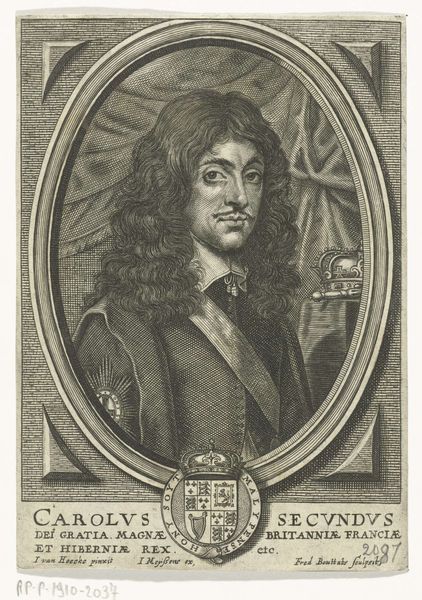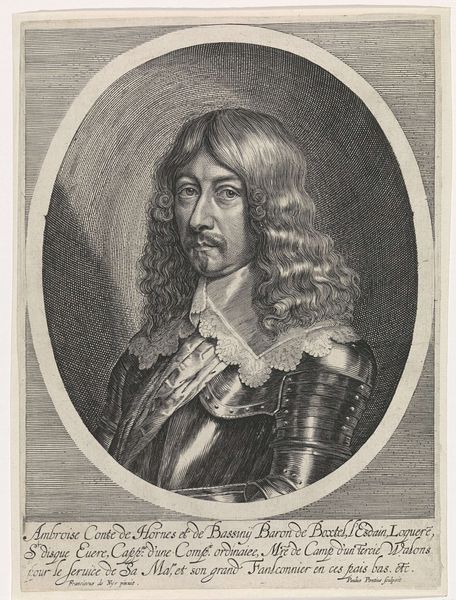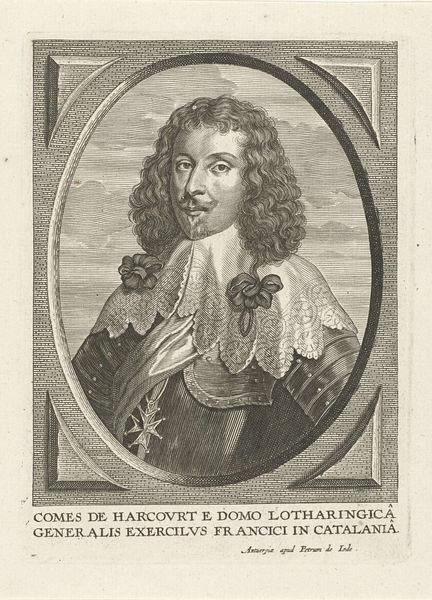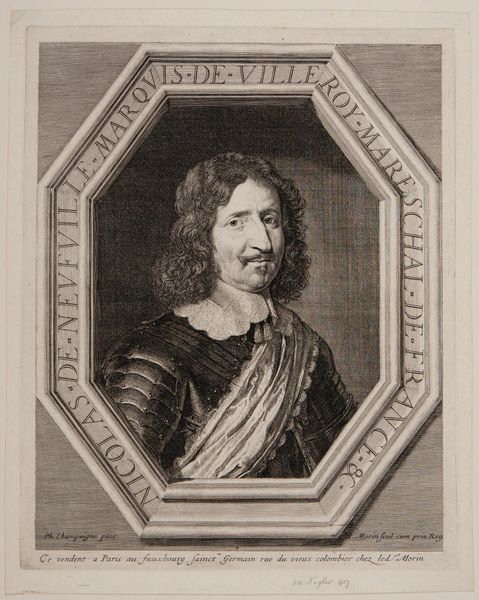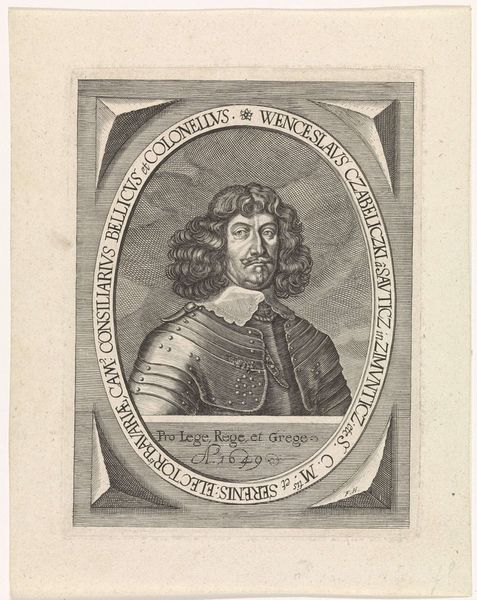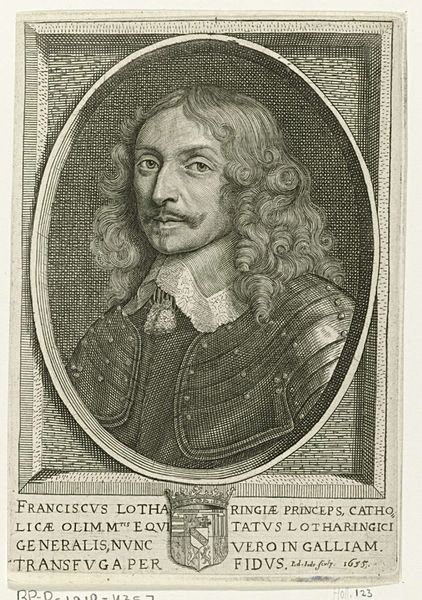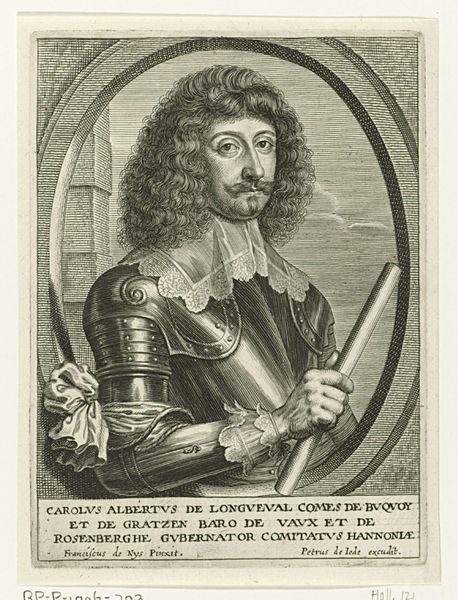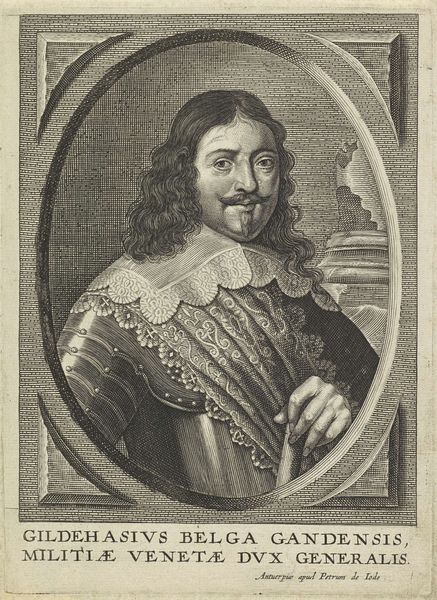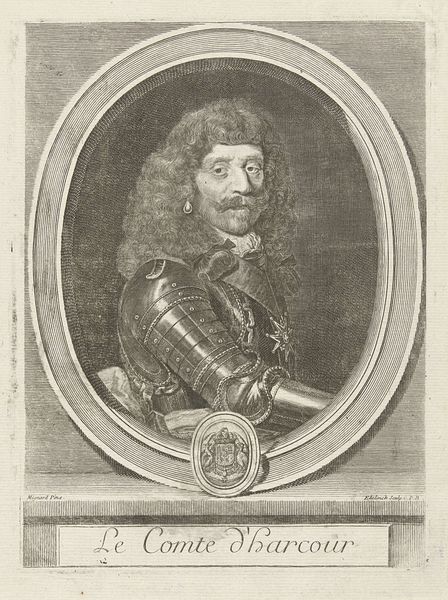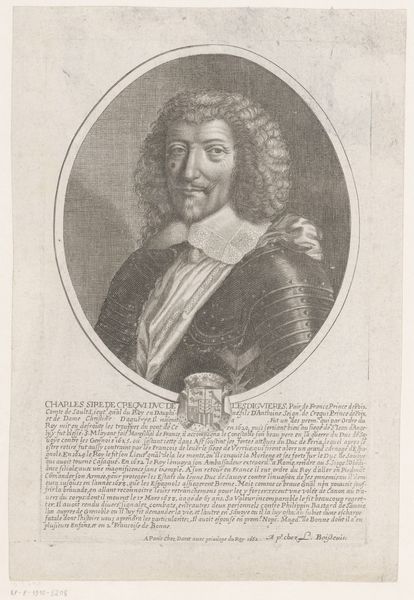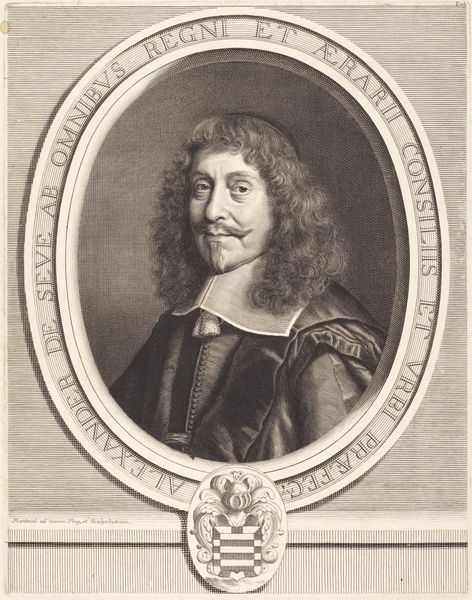
engraving
#
portrait
#
baroque
#
old engraving style
#
personal sketchbook
#
portrait drawing
#
history-painting
#
engraving
Dimensions: height 165 mm, width 118 mm
Copyright: Rijks Museum: Open Domain
Editor: Here we have Theodor van Merlen the second’s engraving of Charles II, King of England, dated between 1619 and 1672. The detail is remarkable! But what immediately strikes me is the tension between the elaborate Baroque style and the almost stern gaze of the King. How do you interpret this work? Curator: That’s a great observation. Let's consider this portrait not just as an image of a king, but as a carefully constructed representation of power during a time of immense political and social upheaval. Charles II reigned during the Restoration, a period marked by attempts to re-establish monarchy and traditional hierarchies after the English Civil War and the Interregnum. What message do you think the artist is conveying about Charles' legitimacy, particularly given the history of conflict between the monarchy and parliament? Editor: I guess that the formal presentation, with all the regalia, reinforces his power. Almost like saying, "I'm back, and everything is as it should be.” Curator: Exactly. This portrait then becomes a powerful statement about the divine right of kings, strategically deployed to consolidate power, while his expression may try to reflect strength. But let's think about who this engraving was for. Was it for the general public? For other members of the aristocracy? Editor: Probably other aristocrats, or maybe even to send to other royal houses across Europe? Curator: Precisely! Consider how this image of Charles II operates within the networks of power and representation of the period. It reveals so much about how rulers wished to be perceived, both domestically and internationally. Editor: It's fascinating how much history can be packed into a single portrait. I’ll definitely be viewing portraits differently from now on. Curator: And hopefully considering whose interests they serve, and the power dynamics at play!
Comments
No comments
Be the first to comment and join the conversation on the ultimate creative platform.
